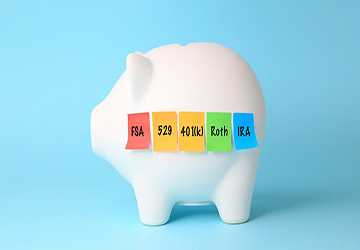Do thoughts of retirement make you anxious or overwhelmed? With strategic planning in your 30s and 40s, you can set yourself up for financial freedom in later years. Early preparation is key to accumulating enough savings to maintain your lifestyle.
In this post, I'll share 6 essential retirement planning tips for your 30s and 40s. Implementing even small steps now makes a massive difference in the long run.
Whether you feel clueless about investing or have some savings but want guidance on how to optimize growth, you’ll find practical advice ahead.
Read on to set your future self up for success! By starting early and sticking to a plan, retirement can move from worry to reality.
6 Key Retirement Planning Tips for Your 30s and 40s

Planning for retirement often gets sidelined by more immediate priorities in your 30s and 40s. However, the money moves made in these decades set the critical foundation for older age freedom. Through disciplined saving, smart investing and envisioning your lifestyle, you can take control of your financial destiny. Don't leave it to chance!
Below we have outlined 6 essential retirement planning strategies suited specifically to your 30s and 40s. These tips empower you to accumulate substantial savings in the prime of your earning years.
1. Know Your Number
Calculate the exact savings amount required to maintain your current or desired retirement lifestyle. Factor in daily costs, healthcare, travel plans, housing etc. and use retirement planning calculators to see how much that totals over an estimated 25+ year timeframe. Review and update this number yearly.
2. Contribute to Retirement Accounts
Save aggressively using tax-advantaged accounts like 401Ks and IRAs in your 30s and 40s. Contribute at least 10-15% of income. Setup automatic transfers so the money moves without any effort.
Take full advantage of employer match programs when available to significantly boost savings.
3. Explore Company Matching
Many employers offer matching contributions when you save in workplace retirement accounts like 401Ks or 403Bs. This ranges from 25% to 100% of what you put in, up to a certain limit.
Be sure to contribute enough to claim the entire 'free money' match amount. Confirm any vesting schedules requiring you to stay employed for a certain period to realize matching benefits.
4. Invest Wisely
Research and select retirement investments suited to timeline and risk tolerance. Seek balanced funds holding stocks and bonds to deliver returns while minimizing volatility.
Diversify further across domestic/international, large/mid/small cap and sector funds. Reinvest all dividends and earnings to accelerate compound growth. Meet yearly with financial advisors to optimize performance.
5. Review Progress Yearly
Check retirement savings account balances and investment returns every year. Is overall savings trajectory on pace to reach your 'number' goal at planned retirement age?
If not on track, boost contributions more aggressively each year. Also reconfirm projected retirement lifestyles costs and adjust target numbers as needed.
6. Envision Your Lifestyle

What does your ideal retirement look like - traveling? relocating? volunteering? Pursuing hobbies? Paint this detailed vision. Referring to this personal purpose regularly keeps you motivated to save today.
Also develop interests to transition into when work stops. Having clarity fuels sticking to a savings plan!
Why Start Planning for Retirement So Soon?
It’s tempting to push off thinking about retirement to some vague future point. However, there are clear advantages to confronting this head-on in your 30s and 40s.
By setting specific savings goals aligned to your envisioned lifestyle and getting investments working early, you leverage time and compound interest to accumulate substantially more money by traditional retirement age.
It also prevents anxiety later about outliving savings.
What’s At Risk If You Don’t Have a Retirement Plan?
Failing to have an intentional retirement savings and investment strategy in place by your 30s and 40s exposes you to significant future risk.
Without disciplined preparation, you may need to drastically downgrade lifestyle expectations to match a lower savings balance. Or potentially delay retirement altogether and keep working indefinitely.
This erases freedom to pursue interests or spend ideal time with family. Don’t let your future self down.
Conclusion
With some diligence in your 30s and 40s, retirement can shift from uncertainty to security. Know how much you need, use workplace tools maximally, invest wisely and review annually to retire with confidence.
Whether you feel clueless or have a plan needing optimization, put these practical steps into action - your future self with thank you!
Start where you are, persist despite setbacks and small gains compound mightily over decades. You have the power to make your retirement dreams a reality through strategic planning today.
FAQs
Q. What percentage of income should go towards retirement in your 30s?
Ans. Ideally save 10-15% annually in your 30s. This ensures adequate accumulation over time to retire comfortably around age 65. Boost further as earnings rise.
Q. How often should retirement planning be reviewed?
Ans. Review retirement planning progress at least annually in your 30s and 40s. Reconfirm target numbers, adjust contributions if needed and rebalance investments to align with growth milestones towards your goal.
Q. What’s the downside of waiting till later to plan retirement?
Ans. Every year delayed cuts hugely into potential investment growth. Starting in your 30s versus 50s could mean hundreds of thousands less savings. Act now to realize full returns over time.

















